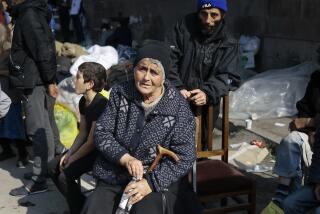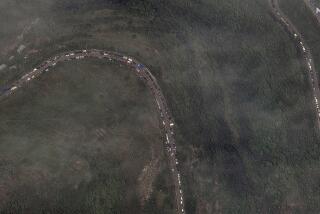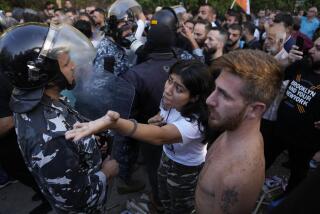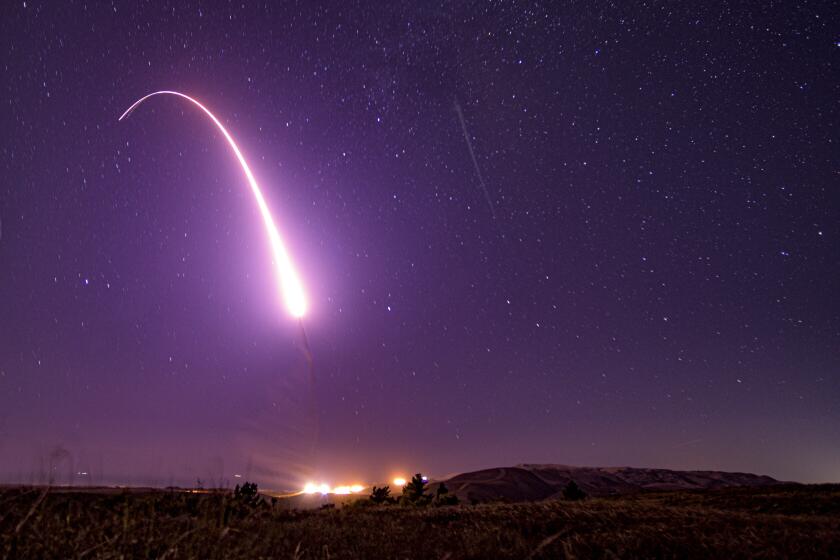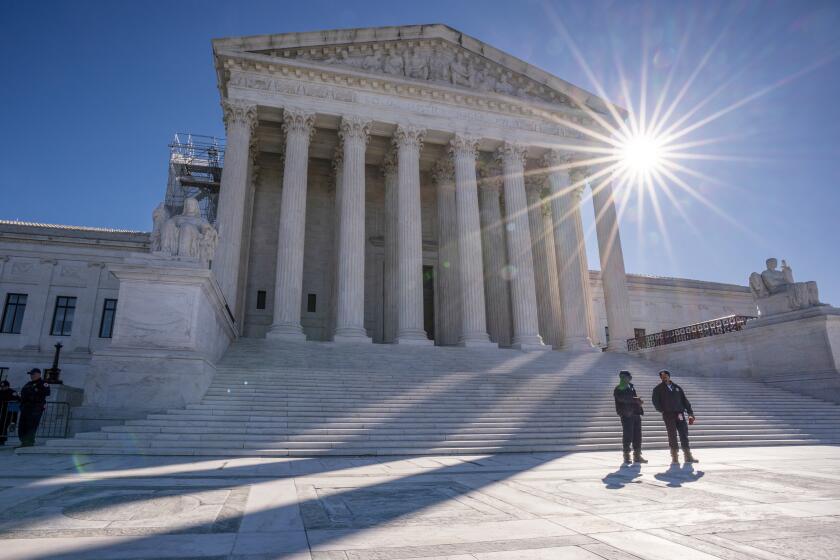Soviets Still Seeking Formula to End Armenian Unrest
- Share via
MOSCOW — After nearly five months of unsuccessful political maneuvering to end serious unrest in Armenia and the nearby enclave of Nagorno-Karabakh, Soviet leaders still appear uncertain how to resolve the crisis.
Some observers, noting a hardening of Soviet press commentary toward Armenian demonstrators in recent days, sense that Moscow may be laying the groundwork for a major crackdown to quell the worst period of domestic unrest since the 1920s.
Others, however, argue that any significant use of force could create more problems than it solves and that the Kremlin leadership simply may play for more time to try to wear the protesters out.
“The threshold of what’s tolerable to Moscow seems to rise all the time,” a senior Western diplomat said. “There is no quick, clinical solution.”
Protests and Strikes
The predominantly Christian Armenian population of Nagorno-Karabakh, a small, mountainous region in Soviet Transcaucasia lying within the mainly Muslim republic of Azerbaijan, has been engaged in a series of virtually unprecedented mass protests and strikes, demanding that the region be made part of Armenia.
Last Monday, the region’s Armenian-dominated leadership voted to secede from Azerbaijan and join Armenia, a development seen as a direct challenge to Moscow’s authority.
Speculation that Moscow may take some new action has also risen with reports that the Soviet hierarchy is scheduled to convene Monday in a session of the Presidium of the Supreme Soviet, the national Parliament, to discuss the problem.
Tension in the troubled region remained high Friday, both in the Armenian capital of Yerevan and in the Nagorno-Karabakh capital, Stepanakert, according to official and unofficial accounts from the region.
In Yerevan, Armenian government officials denied reports that demonstrators had closed the city’s airport for the second time in 10 days. But they admitted that large numbers of Soviet troops are deployed around the facility and that only persons holding tickets are being allowed into the terminal.
The Soviet news agency Tass reported no break in a nearly two-month-old general strike in Stepanakert and described the city’s population as “exhausted by the situation.”
Residents in the troubled region, reached by telephone from Moscow, spoke of growing food shortages, and Tass said more than 130 freight cars remain unloaded at the city’s main railroad station.
As unrest continues, diplomats here have noted a significant change in both the content and tone of accounts of the disturbances carried in the Soviet media.
Protesters increasingly are being described by Soviet commentators as extremists or “hooligans,” and their actions are portrayed as being against Soviet public interest.
On Thursday evening, for example, a 40-minute current affairs television program showed women employees at an electronics factory in the Ukraine complaining that they were unable to work because parts from the strike-torn region had failed to arrive.
Another segment of the same program dwelled on young soldiers injured July 5 while dispersing demonstrators from the Yerevan airport. One person was killed and 36 others were hospitalized after the clash, which ended a two-day occupation.
Although Armenians had claimed troops used excessive force to break up the protest, the soldiers, all ethnic Russians, labeled the demonstrators “extremists” and said they were attacked while attempting to reopen the airport. No Armenians were interviewed during the program.
An Armenian government official in Yerevan, reached by telephone from Moscow, said the tenor of the program had angered residents in the capital, further heightening tensions.
A television news program Wednesday reported the seizure of illegal weapons and ammunition in Nagorno-Karabakh, while Thursday’s edition of the Communist Party newspaper Pravda hardened its line. Pravda asserted that Armenian protests in Moscow were now inspired by extremists and dissidents and had become a public nuisance by disrupting traffic and frightening people.
More to Read
Sign up for Essential California
The most important California stories and recommendations in your inbox every morning.
You may occasionally receive promotional content from the Los Angeles Times.
